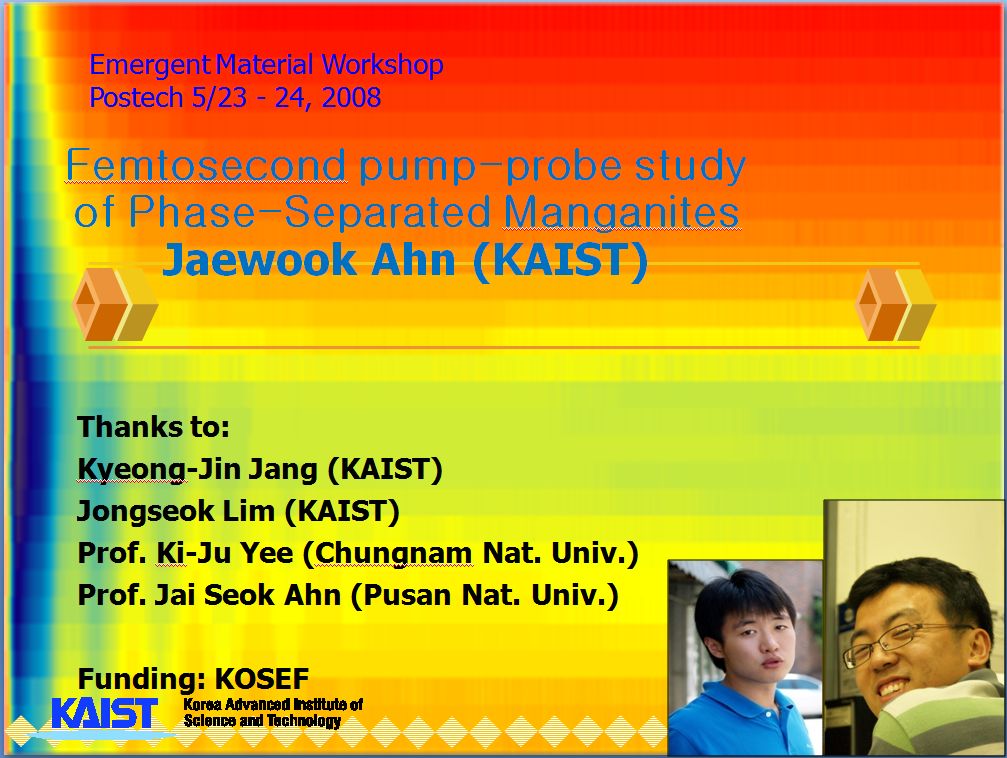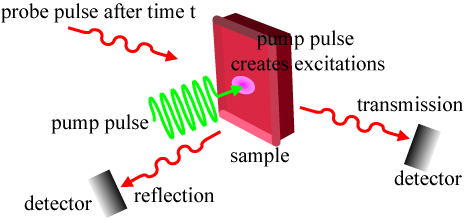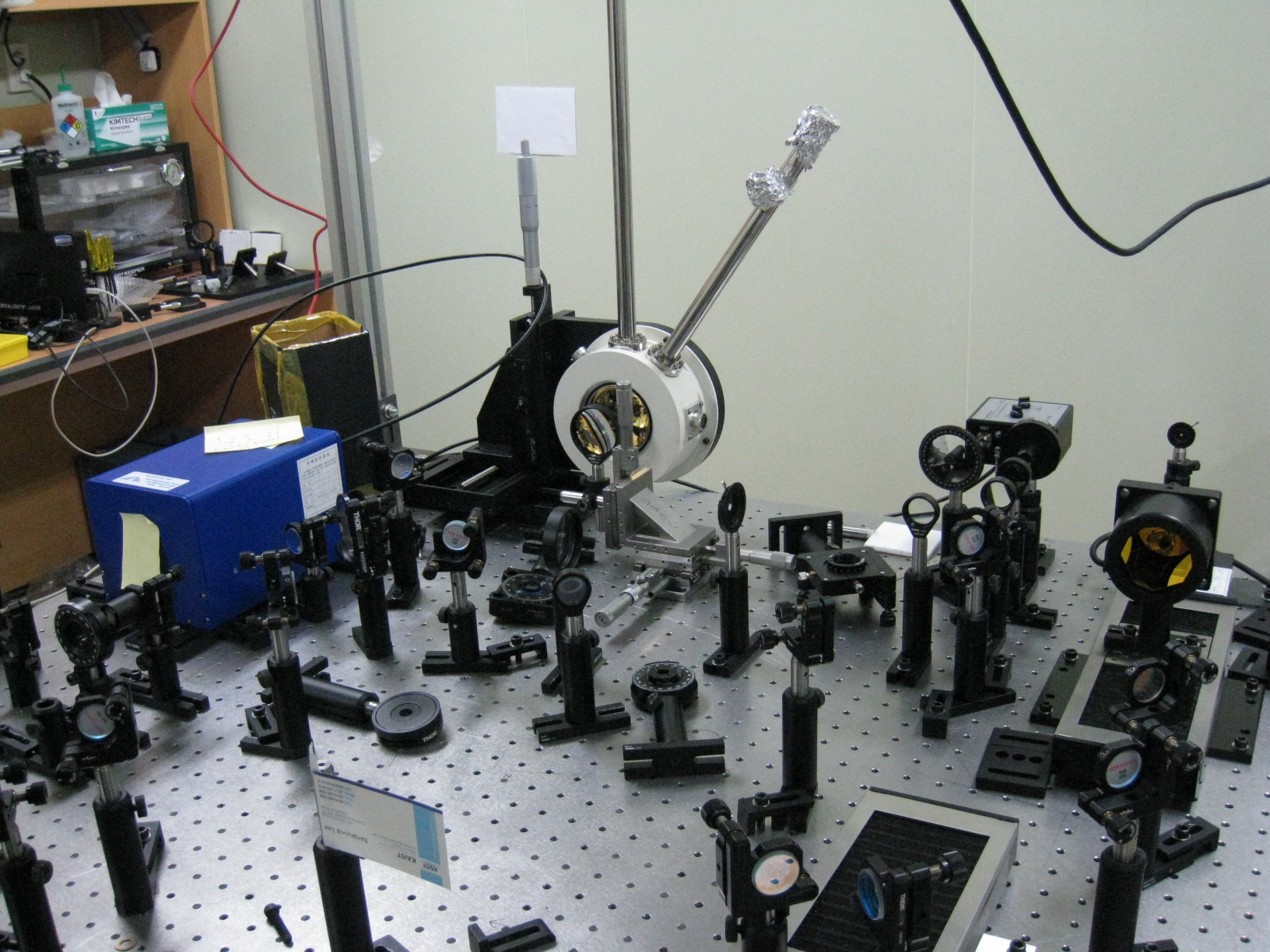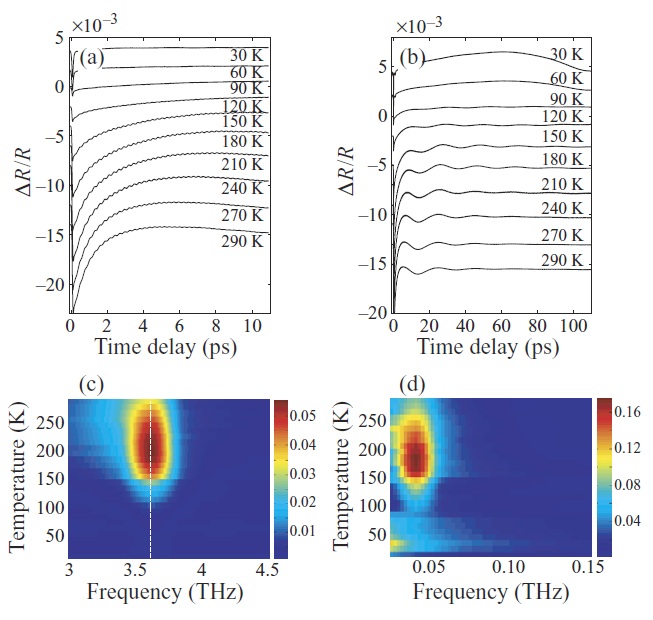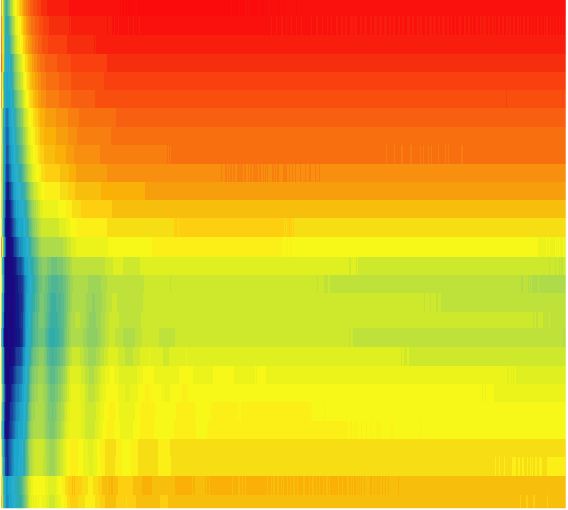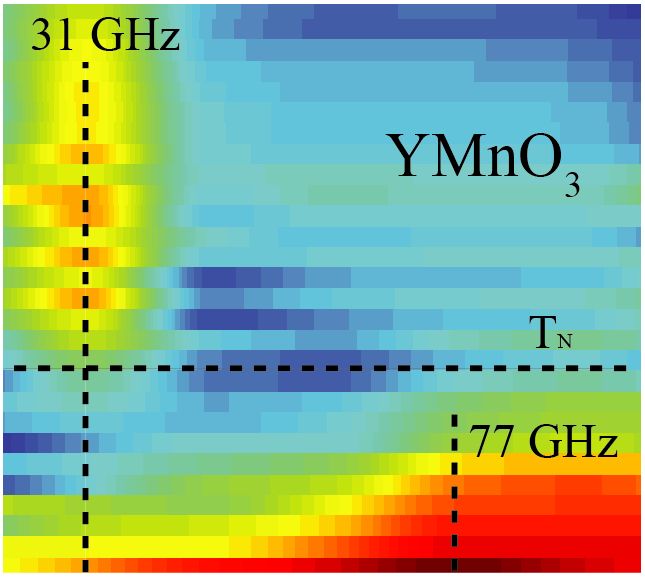Ultrafast Phenomena
Time-resloved pump-probe experiment is a useful tool in studying the dynamics related to electrons, phonons, and spin.
The basic analogy of IR pump-probe method is simple that a powerful light pulse, usulally labeled the 'pump pulse' of 'excitation pulse', interacts with the sample and excites it into a non-equilibrium state. The sample thereafter relaxes towards a new equilibrium state. This process can be mapped by sending a second much weaker pulse, 'probe pulse', onto a sample. The 'probe pulse' detects a change of optical properties without disturbing the object under investigation.
Left figure shows simple scheme of this technique.
Our research of ultrafast phenomena is investigations non-equilibrium states of electron, phonon, and spins in correlated electron materials, especillay we are interested in rare-earth manganites. We have executed in phase-sepearted manganite, <math>\rm{La_{1/4}Pr_{3/8}Ca_{3/8}MnO_3</math>, and multiferroic hexagonal manganites <math>\rm{LuMnO_3}</math>.
The setup of pump-probe system is shown in right figure. The temperature of the sample was varied from 5 to 300 K in a JANIS ST-500 cryostat filled with liquid He.
Ultrafast IR spectroscopic study of coherent phonons and dynamic spin–lattice coupling in multiferroic LuMnO3
The concurrent existence of ferroelectricity and magnetism within a single crystalline system characterizes the multiferroic materials discovered in recent years. To understand and develop the multiferroic phenomenon, we need to investigate the unusual coupling between spin and lattice degrees of freedom. Spins in multiferroics are expected to be elastically coupled to phonons. Therefore, the time-dependent study can be a crucial factor in understanding the coupled dynamics. Here, we report the observations of strong dynamic spin–lattice coupling in multiferroic LuMnO3. A coherent optical phonon of 3.6 THz and its temperature dependence is measured for the first time from our femtosecond IR pump and probe spectroscopy. Also, we observed a coherent acoustic phonon of 47 GHz similar to a previous report (Lim et al 2003 Appl. Phys. Lett. 83 4800). Temperature-dependent measurements show that both optical and acoustic phonons become significantly underdamped as temperature decreases to TN, and they disappear below TN. These observations reveal that phonons are coupled to spins by magneto-elastic coupling, and the disappearance of phonon modes at TN is consistent with the isostructural coupling scheme suggested by Lee et al (2008 Nature 451 805). New Journal of Physics 12 (2010) 023017
Ultrafast near-infrared spectroscopic study of coherent phonons in the phase-separated manganite La1/4Pr3/8Ca3/8MnO3
We report the generation of coherent optical and acoustic phonons in mixed valent manganite La1/4Pr3/8Ca3/8MnO3 using femtosecond infrared pump-probe spectroscopy. Temperature-dependent measurements of the time-resolved optical reflectance, obtained over a range of 5–300 K, revealed that the energy of the photoexcited electrons dissipated during relaxation to acoustic phonons, in the high-temperature paramagnetic phase, and to optical phonons, in the low-temperature charge-ordering phase. Analysis of the temperaturedependent behavior reveals that the modal amplitudes of the coherent phonons appear strongly correlated with the charge-ordering phase. Phys. Rev. B 81, 214416 (2010)
Strong spin-lattice coupling in multiferroic hexagonal manganite YMnO3 probed by ultrafast optical spectroscopy
We report the observation of spin-lattice coupling in multiferroic YMnO$_3$ by femtosecond near-infrared pump and probe spectroscopy. A coherent 31~GHz acoustic phonon was detected above the magnetic ordering temperature, and a higher frequency coherent mode was observed in the anti-ferromagnetic phase. This temperature-dependent measurement demonstrates that the acoustic phonon excitation is coupled to spin ordering. Appl. Phys. Lett. 97, 031914 (2010)
